HyukJoon Kwon
Machine Learning based Interference Whitening in 5G NR MIMO Receiver
Jul 06, 2022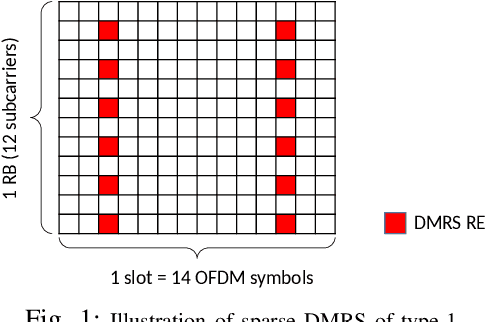
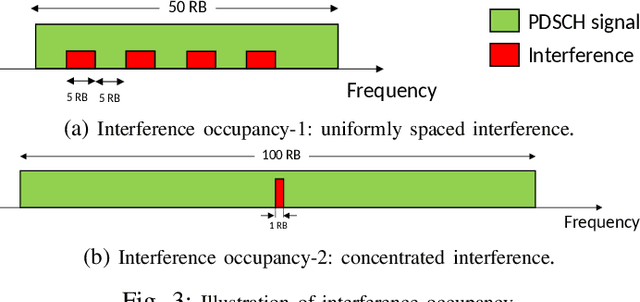

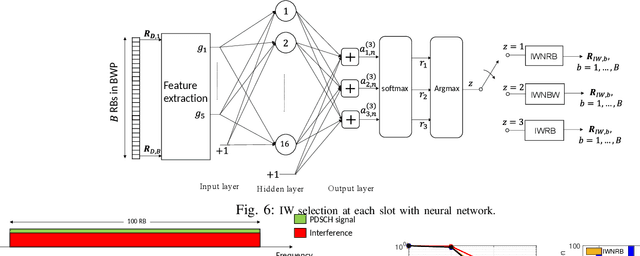
Abstract:We address the problem of computing the interference-plus-noise covariance matrix from a sparsely located demodulation reference signal (DMRS) for spatial domain interference whitening (IW). The IW procedure is critical at the user equipment (UE) to mitigate the co-channel interference in 5G new radio (NR) systems. A supervised learning based algorithm is proposed to compute the covariance matrix with goals of minimizing both the block-error rate (BLER) and the whitening complexity. A single neural network is trained to select an IW option for covariance computation in various interference scenarios consisting of different interference occupancy, signal-to-interference ratio, signal-to-noise ratio, modulation order, coding rate, etc. In interference-dominant scenarios, the proposed algorithm computes the covariance matrix using DMRS in one resource block (RB) due to the frequency selectivity of the interference channel. On the other hand, in noise-dominant scenarios, the covariance matrix is computed from DMRS in entire signal bandwidth. Further, the proposed algorithm approximates the covariance matrix into a diagonal matrix when the spatial correlation of interference-plus-noise is low. This approximation reduces the complexity of whitening from $\mathcal{O}(N^3)$ to $\mathcal{O}(N)$ where $N$ is the number of receiver antennas. Results show that the selection algorithm can minimize the BLER under both trained as well as untrained interference scenarios.
Reliable and Low-Complexity MIMO Detector Selection using Neural Network
Oct 11, 2019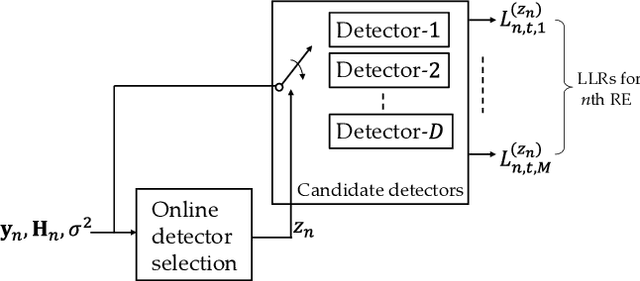
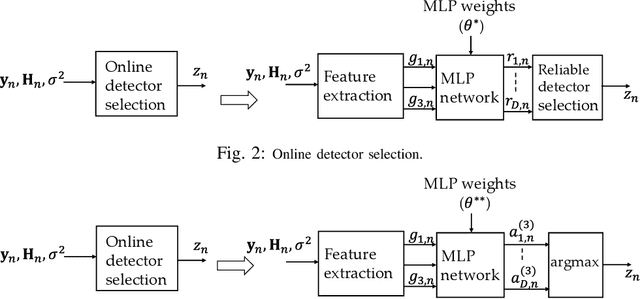
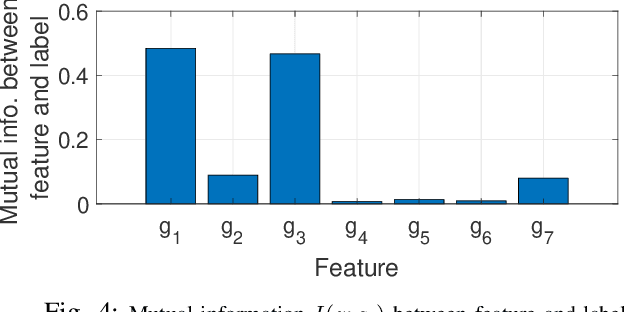
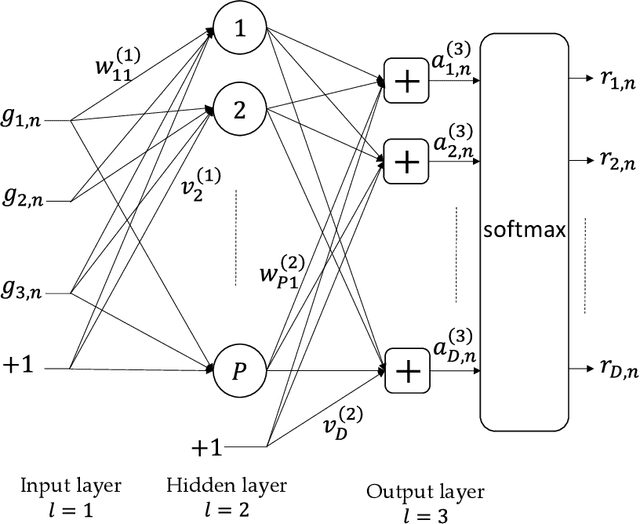
Abstract:In this paper, we propose to dynamically select a MIMO detector using neural network for each resource element (RE) in the transport block of 5G NR/LTE communication system. The objective is to minimize the computational complexity of MIMO detection while keeping the transport block error rate (BLER) close to the BLER when dimension-reduced maximum-likelihood (DR-ML) detection is used. A detector selection problem is formulated to achieve this objective. However, since the problem is high dimensional and NP-hard, we first decompose the problem into smaller problems and train a multi-layer perceptron (MLP) network to obtain the solution. The MLP network is trained to select a low-complexity, yet reliable, detector using instantaneous channel condition in the RE. We first propose a method to generate a labeled dataset to select a low-complexity detector. Then, the MLP is trained twice using quasi-Newton method to select a reliable detector for each RE. The performance of online detector selection is evaluated in 5G NR link level simulator in terms of BLER and the complexity is quantified in terms of the number of Euclidean distance (ED) computations and the number of real additions and multiplication. Results show that the computational complexity in the MIMO detector can be reduced by ~10X using the proposed method.
 Add to Chrome
Add to Chrome Add to Firefox
Add to Firefox Add to Edge
Add to Edge